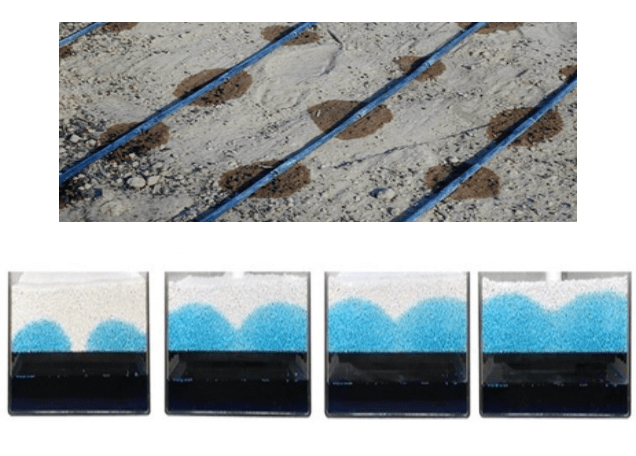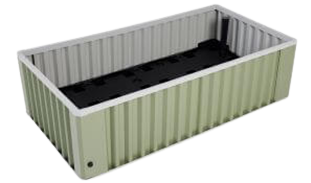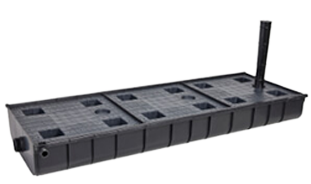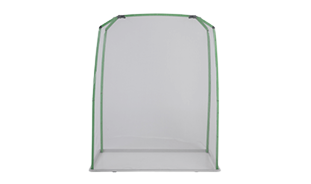WaterUps Sub-Irrigation outperforms Drip Irrigation
Drip irrigation is probably the most widely used system of irrigation in landscaping. So we thought we would see how wicking bed sub-irrigation using WaterUps compares. We look at both irrigation systems in terms of their water availability, water capture, watering effectiveness, installation requirements, soil nutrition, cost and ongoing maintenance needs.
Water Availability
Drip Irrigation
- Drip irrigation is very effective at watering the area around the drip outlet points / the emitters, however, horizontal moisture spread is limited.
- This does not keep soil profile consistently moist with dry areas between drip outlet points requiring rainfall for a complete water.
- Drip irrigation is reliant on timers, solenoids, fittings, valves, and diaphragms and is generally set to a timer for a daily watering cycle.
- Drainage is an important aspect of water availability. Drip irrrigation allows water to penetrate the soil in vertical columns as shown in the university research referenced below, however, if heavy clay is below the planting layer then root rot can result. More plants lost from overwatering and poor drainage than underwatering. Given that drip systems are mostly set to timers, there is no capability of adjusting for prolonged rain events except by manual intervention.
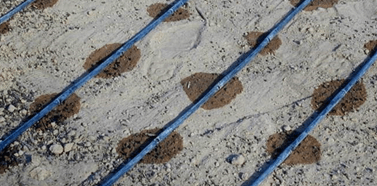
The above image shows the surface spread of moisture from the drip lines.
WaterUps Sub-Irrigation
- Provided that there is water in the reservoir, wicking provides constant water availability to plants and consistent soil moisture.
- Wicking uses the natural phenomenon of capillary rise.
- One of the most important components of a wicking system is the overflow pipe. This is the regulator of water depth in the reservoir. Most of the problems with DIY wicking beds, when they do occur, relate to the incorrect placement of the overflow pipe. A common mistake is to place the overflow pipe too high with the result that the water is in contact with the soil leaving it waterlogged. This can create an anaerobic mix with smelly soil and unhealthy or dead plants. The WaterUps system has been designed so that the overflow position is fixed at the correct height and combined with a vital air gap built into underside of the wicking cell base. This avoids any waterlogging problems and promotes ideal soil moisture.

The above series of images show a time lapse over a couple of days of the wicking process. It show that the wicking is both vertical and lateral at an angle of approximately 45 degrees.
Water Capture
Drip Irrigation
- Drip irrigation is not designed for rainwater capture.
WaterUps Sub-Irrigation
- Wicking bed systems are designed to capture rainwater until the water reservoir is full. Excess water is then drained to waste as normal. Each 1.2m section of WaterUps Sub-Irrigation Channel can hold up to 51 litres of water. The capture of rainwater can significantly extend the period between refilling.
- In NSW, WaterUps has been signed off by BASIX certifiers as meeting the rainwater tank classification requirements. 28 sq metres of WaterUps is equivalent to a 3,000 litre water tank.
Watering Effectiveness
Drip Irrigation
- Drip irrigation is effective at delivering water to the immediate area surrounding the drip outlets but leaves intermediate dry areas of ‘dead soil’. Drip irrigation creates little satellite colonies of life cut off from each other with dry soil supporting little life in between. Roots grow only in the areas that receive daily water. The limitations of moisture distribution via drip line irrigation, both surface and sub surface can be seen in the images below. The first photo is from research carried out by Michigan State University to determine ‘Drip Irrigation Water Distribution Demonstration’ of sub surface drip line layer at different depths. This shows that there is an absence of lateral water spread beneath the surface.
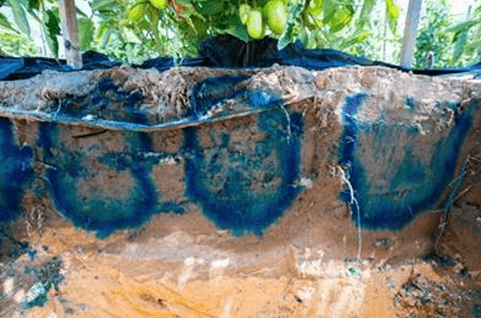
- The next photo is from research carried out by the West Australian Department of Primary Industries and Regional Development to ‘show water movement below drip irrigation’.

- Both tests carried out show a similar pattern of water distribution, be it delivered at or below the surface. The depth at which the drip line is buried has no effect on the spread of moisture. The bands of moist soil remain vertical cylinders and do not meet in either scenario. There is no water advantage to having drippers or diaphragms any closer than the stems of the plants.
- Any system that relies on gravity to carry the water through the profile, such as drip irrigation, will ultimately lose that water beyond the root zone as gravity continues to act on the water.
WaterUps Sub-Irrigation
- WateUps sub-irrigation wicking systems are specifically designed to deliver a consistent level of moisture directly to the root zone.
- The reservoir traps the rainwater that gravity provides, and then uses the opposing force of atmospheric pressure to push the water back using the cohesive properties of water in the natural phenomenon of capillary rise.
Installation Requirements
Drip Irrigation
- Drip irrigation is easy to install on level and uneven ground.
- It requires a permanent connection to water supply and usually run through a solonoid and timer as well as a backflow preventer.
WaterUps Sub-Irrigation
- Wicking sub-irrigation wicking systems require a level base for each channel section. On sloping ground channel sections need to be installed horizontally regardless of the angle of the slope. On very steep slopes the channels are best laid along the contours to ensure a more consistent depth across the system.
- WaterUps do not require a permanent connection to a water source. Given that they only require occasional refilling they can be located in more remote situations well away from a permanent water supply.
Watering and Soil Nutrition
Rainwater has a nutritional and chemical value for plants.
- The dissolved nitrogen in its nitrate and ammonium forms in the water is an instant green boost to plants.
- Raindrops absorb carbon dioxide gas on their way down, becoming slightly acidic, breaking down organic matter in the soil, and releasing micro-nutrients such as copper, iron, manganese, and zinc that are essential to plant growth.
- Rainwater is highly oxygenated as it falls and is for that reason that soil can stay waterlogged after heavy rains without bringing on anaerobic conditions or drowning plants.
- Oxygen is critical for ‘respiration’ for all plant cells to release energy both to power their processes and to grow.
Drip Irrigation
- Drip irrigation does a good job at efficiently delivering precise amounts of water to a root zone with the intent to keep plants watered and alive. Unfortunately, drip irrigation does not assist in the overall health of the soil as the moisture in this system is not consistent. The drip is sporadic to each emitter and the dry patches will not benefit microbial activity or worm life to the same extent as wicking.
- The benefits of rainwater are to a significant extent missed by having a root system that has been encouraged to grow in a column and not to spread.
WaterUps Sub-Irrigation
- The WaterUps sub-irrigation wicking systems capture and store rainwater with all its dissolved nutrients (leachate) in its underground reservoir for the later use by the plants as they need.
- Microbial activity is enhanced when there is ‘even and consistent’ water supply.
- WaterUps delivers water to the entire soil profile, keeping soil alive and productive between natural rain events. This is done more efficiently than a drip irrigation system which loses water through the soil profile below the root zone.
Cost
While drip irrigation has a lower up front installation cost, total costs including maintenance and installation are equivalent over a 3 year period.
Drip Irrigation
- The initial capital outlay for drip irrigation can be up to 30% lower per square metre than wicking bed systems to install.
- However, ongoing maintenance and replacement costs are relatively high for a drip system. Also the incidence of plant loss is likely to be much higher due to system failure from clogging.
WaterUps Sub-Irrigation
- The WaterUps sub-irrigation wicking system has a higher initial capital cost, but this is offset by the fact that ongoing maintenance and replacement costs are virtually zero.
Maintenance requirements
Drip Irrigation
- Drip lines on the surface are subject to UV decay, whilst buried drip lines can block while in use, or be damaged during replanting. Sub-surface drip lines are also at constant risk of root invasion.
- Both surface and sub-surface drip systems can be prone to clogging from soil particles and suspended organic matter and blockage by root hairs. Bacterial slimes and algae can also accumulate on the interior walls of the laterals and block the emitters. They require regular maintenance.
- Drip lines are also prone to damage by rodents chewing the tubes and by machinery and hand dipping equipment.
WaterUps Sub-Irrigation
- Once installed wicking provides a very low maintenance irrigation solution.

